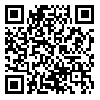BibTeX | RIS | EndNote | Medlars | ProCite | Reference Manager | RefWorks
Send citation to:
URL: http://jdm.tums.ac.ir/article-1-5051-en.html
Background and Aims: Iatrogenic damage to adjacent tooth during proximal cavity preparation is one of the most common side effects in operative dentistry. The aim of this study was to determine prevalence of iatrogenic damages to adjacent tooth during the preparation of proximal Class II cavities among undergraduate students at dental faculty of Tehran University of Medical Sciences in 2010 .
Materials and Methods: 106 posterior permanent teeth which had Class II decay with sound proximal surfaces of adjacent teeth were selected and restored by dental students awarding the aims of the present study. After finishing restoration, proximal surfaces were completely dried by air and evaluated with dental chair light. In doubtful cases, surfaces were evaluated with × 3 magnification. Damages were classified into 2 groups abrasion and groove. Data were analyzed using Fishers exact and Pearson chi square tests .
Results: The frequency of adjacent surfaces damage were 57.5%, with 31.1% damages as abrasion and 26.4% as groove. Students who used matrix band and wedge in proximal area as preventive instruments showed 53.4% damages and other students showed 57.3% damages (P>0.05). A significantly higher number of females and students at restorative course level (3) used wedge and matrix band than males and students at restorative course level (4) for protecting adjacent teeth (P<0.05).
Conclusion: According to the high percentage of iatrogenic damages on adjacent sound teeth in class II cavity preparation, teaching of preventive methods and using proper techniques is necessary for dental students as future dentists.
Received: 2013/03/2 | Accepted: 2013/09/29 | Published: 2013/11/25
| Rights and Permissions | |
 |
This work is licensed under a Creative Commons Attribution-NonCommercial 4.0 International License. |




